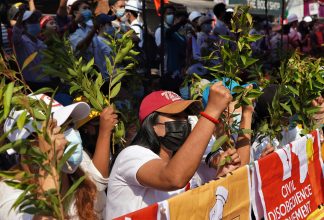Burma Coup – What has Happened and Why?
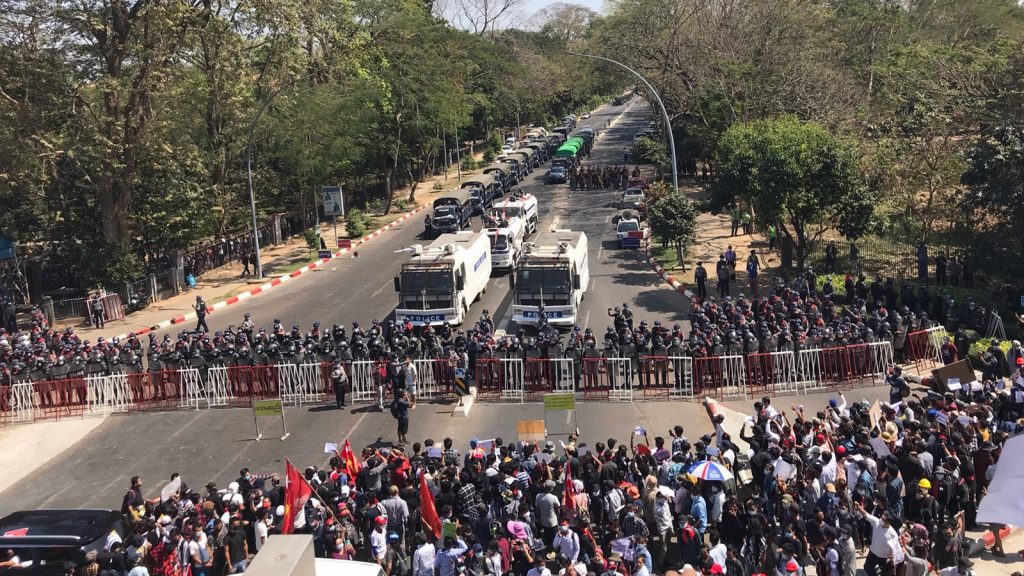
On 1 February, the military seized power over Burma by overturning the November 2020 election results and detaining State Chancellor Aung San Suu Kyi. Since then, nationwide mass protests against the military junta have gradually grown stronger, louder, and more organised. In tandem, the military’s efforts to disperse the protests have been characterised by violent and ruthless methods that have so far left thousands injured and at least 286 dead.
“Protesters are risking their lives to open a new chapter for the next generation. In this current situation, old fears of enforced disappearances, killings, and arrests are coming to life again. We can not allow bitter past to pass on to the new generation.” said a representative of one of Civil Rights Defenders partner organisations in the country.
The coup
After decades of repressive military rule and violent ethnic conflicts, the transfer to a civilian government in 2015 sparked hope across Burma. However, while many believed that democratic reforms were underway, the military continued to rule behind the scenes. The 2008 constitution, which was written by the military, remained in place. Among other things, it guarantees that a quarter of the seats in parliament are reserved for the military, which gives them veto power on any change to the constitution.
In November 2020, the National League for Democracy (NLD), led by State Chancellor Aung San Suu Kyi, won another landslide victory in the general election. The military’s position was severely weakened and its political party, USDP, won only 33 of the 476 seats in parliament. This can be compared to the 396 seats that were won by the NLD. This triggered a reaction from the military, which claimed that the election had been paved by widespread fraud. This claim was however turned down by the election commission.
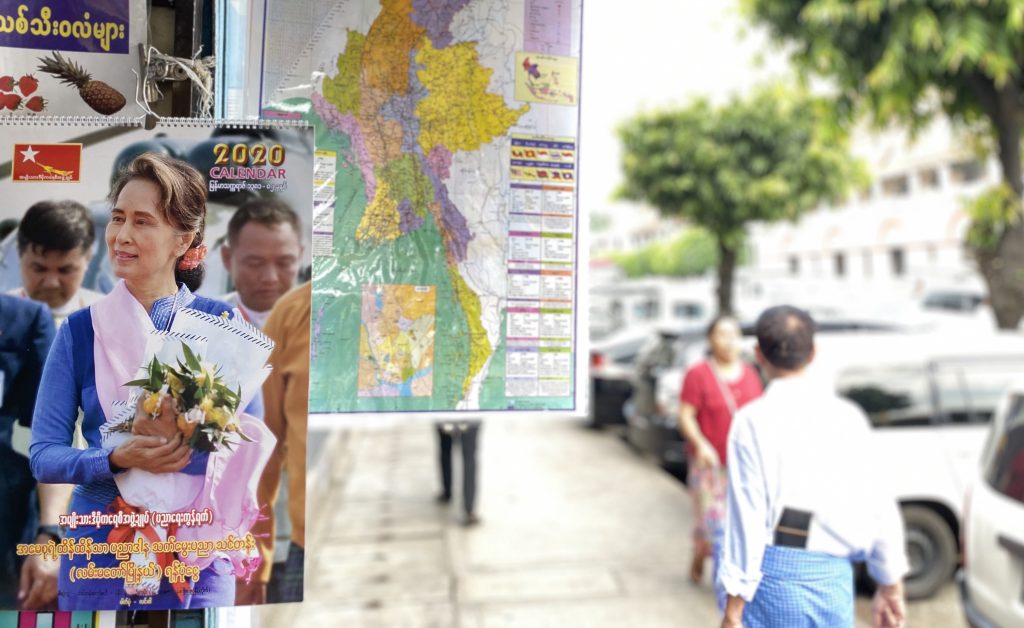
As the parliament was scheduled to hold its first session since the elections, the military launched a coup on 1 February, effectively establishing a ruling military junta once again. The coup makers, headed by General Min Aung Hlang, immediately imposed a year-long state of emergency and arrested several high-ranking NLD leaders, including the country’s de-facto leader, Aung San Suu Kyi.
The protests
The protests, which are considered to be the largest since the Saffron Revolution in 2007, have spread rapidly across the country. Even though tension was rising from the very beginning, the first weeks of protests were met with relative calm from the military. This however changed on 9 February when a 19-year-old girl, who was shot by police in Naypyidaw, died from her injuries. On 20 February, two unarmed and peaceful protesters, one of whom a 16-year-old boy, were shot dead by security forces.
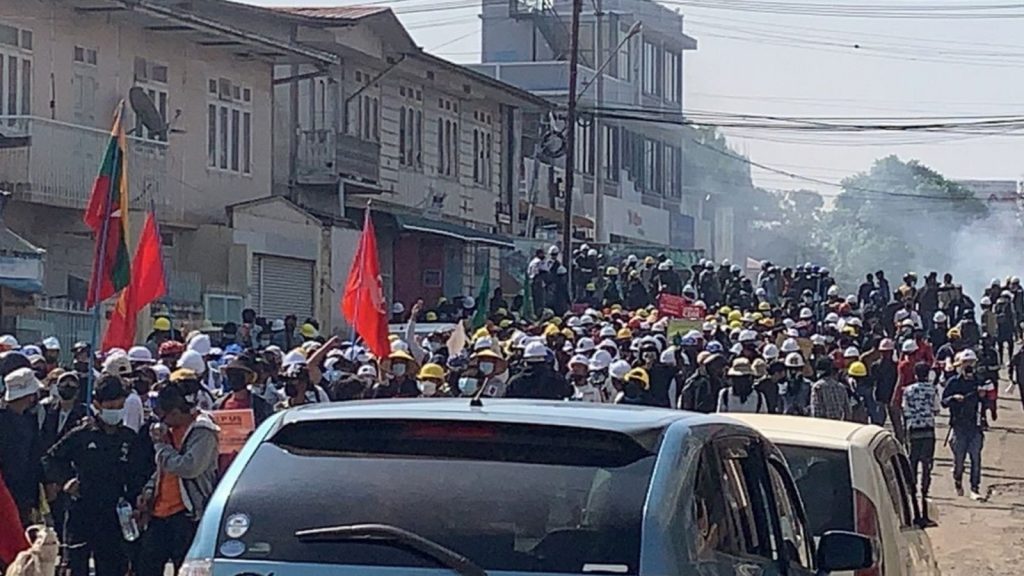
The deadly violence sparked an outcry and led to a general strike on 22 February. Since then, millions of Burmese citizens have taken to the streets from the Kachin State in the north all the way down to the southernmost states of the country.
The demonstrations have been met with violent military force, and many have been injured, killed, and arbitrarily detained. Police and security services have repeatedly been using water cannons, rubber bullets, and live ammunition in attempts to disperse the protests. There are also widespread reports of enforced disappearances and torture of arbitrarily detained prisoners.
Close to 300 peaceful pro-democracy protesters have been killed. The youngest of the victims was a seven-year-old girl who was shot dead by security forces in the city of Mandalay on 23 March. In addition, approximately 3,000 people have been arbitrarily arrested, detained, or sentenced, according to the local monitoring group Assistance Association for Political Prisoners (AAPP).
To crack down on pro-democracy demonstrations, the military has also imposed restrictions such as curfews and limitations to the right to assembly. In addition, widespread internet blackouts and interruptions to the national telephone line have been used as methods to stop the civil disobedience movement to organise and communicate.
Another consequence of the escalated fighting in the Kachin and Karen areas is that the number of new internally displaced persons has increased. The lack of basic supplies of food, shelter, and security is currently of pressing concern.
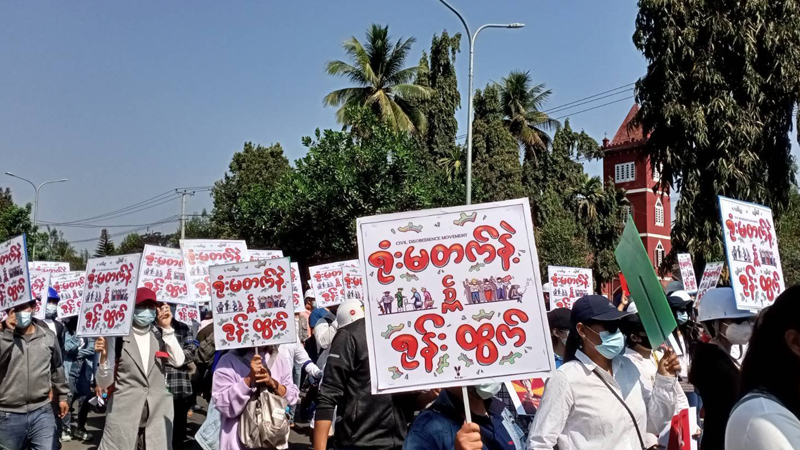
Still, despite increasing violence and repression, the street protests and civil disobedience campaign continues to grow. Their general strikes have been largely successful and by now, a significant number of government servants have joined the movement.
The demands
Civil society groups across Burma are now calling for an end to the military regime. They further call for the abolishment of the 2008 constitution and the establishment of a federal democracy. Civil Society groups are also urging the United Nations to urgently send a monitoring and intervention mission to Burma, with the aim of ending the ongoing deadly violence. In addition, the protesters continue calling for the release of all those who have been unjustly detained, including Aung San Suu Kyi and the other NLD leaders.
Many organisations, including several of Civil Rights Defenders’ partner organisations, are also appealing to the international community to sanction military leaders and their businesses. On 22 March, the European Union imposed sanctions on eleven high-ranking officials of the military, including Commander-in-Chief, Min Aung Hlaing, and Deputy-Commander-in-Chief, Soe Win. The United States of America also imposed sanctions on several military leaders on 22 March.
What does Civil Rights Defenders do?
We continue to monitor the situation in the country. This is being done in close cooperation with Burmese partner organisations which are part of the civil disobedience movement.
Civil Rights Defenders is also part of the global emergency response to the escalating security situation for human rights defenders in the country. Among other things, we provide emergency support to those who face immediate danger or need proactive security assistance. Since the coup on 1 February, a total of 158 Burmese individuals have received support from our Emergency Fund. The support mechanism has ensured that help is not only provided to larger cities, but also to rural areas and regions dominated by ethnic minorities.
The Emergency Fund offers support such as legal aid, international protection, or increased security by measures such as assault alarms, security training, psychosocial support, or increased office security. In Burma, the majority of the support has been to provide safe accommodation for human rights defenders. We have also provided secured office spaces and communication tools for human rights defenders on the ground.
Despite the difficulties such as the closure of communication services and ongoing deadly violence, we aim to continue to provide tailor-made solutions to each defender who is eligible for emergency support.
Also read
- 11 March 2021: “Burmese Military Must Immediately Stop Killing Peaceful Protesters”.
- 8 March 2021: “International Women’s Day 2021: ’I urge all women to fight together for equality and justice’”
- 9 February 2021: “Call for Immediate Action to Ensure Protection of Demonstrators in Burma”
- 5 February 2021: “Burma Coup – Europe Must Sanction Military Companies”
- 3 February 2021: “Burmese Rights Group Speaks out Against Military Coup”
- 1 February 2021: “Myanmar Military Should End its Use of Violence and Respect Democracy”
